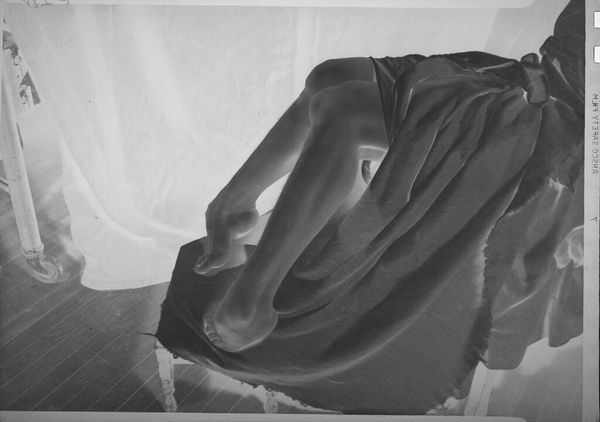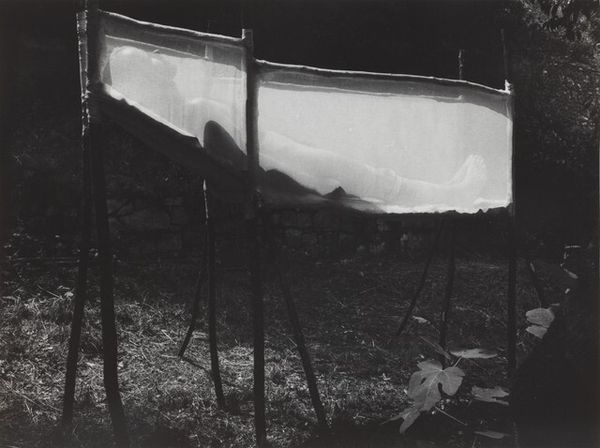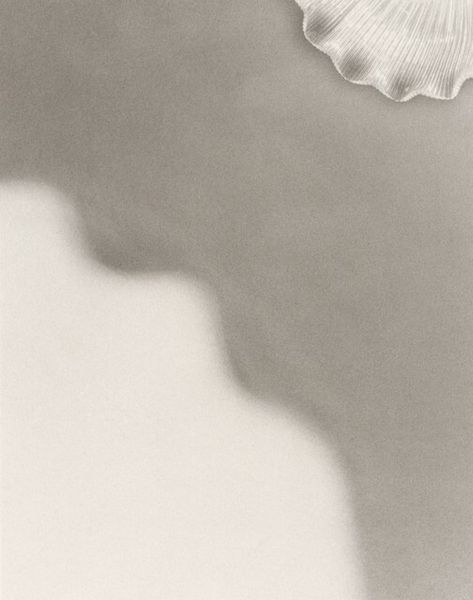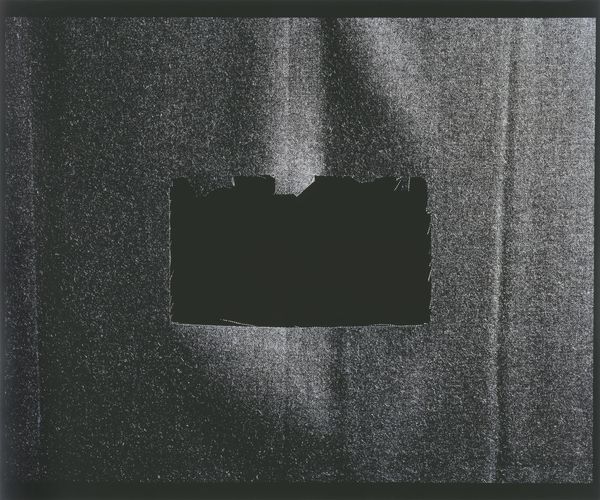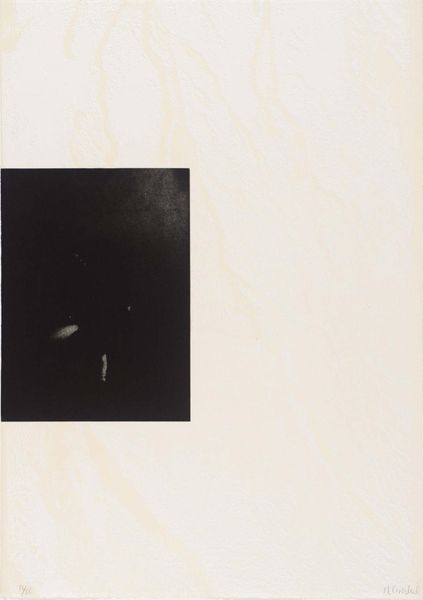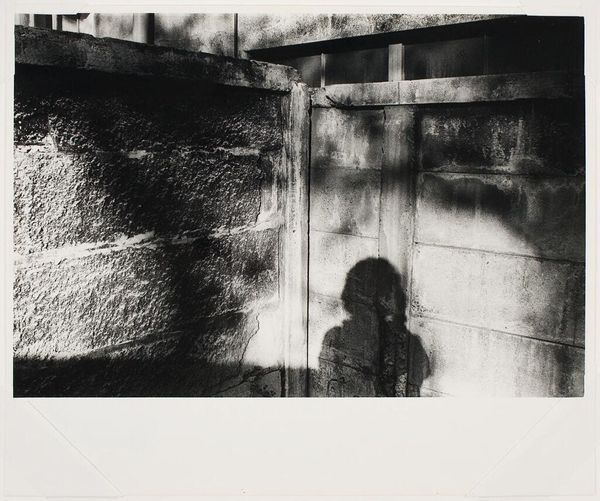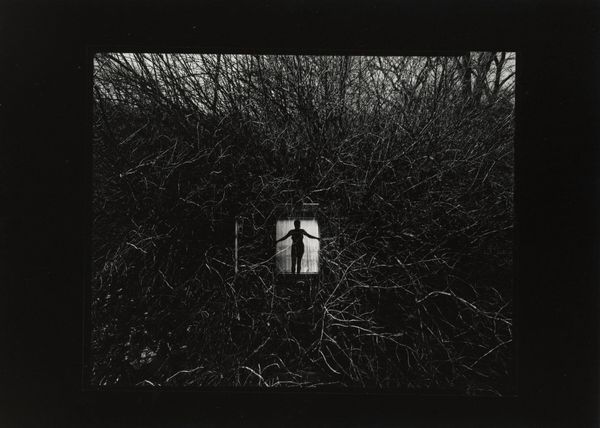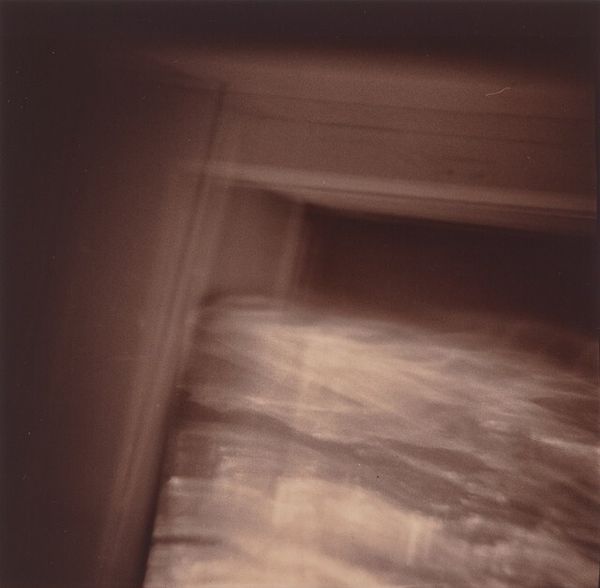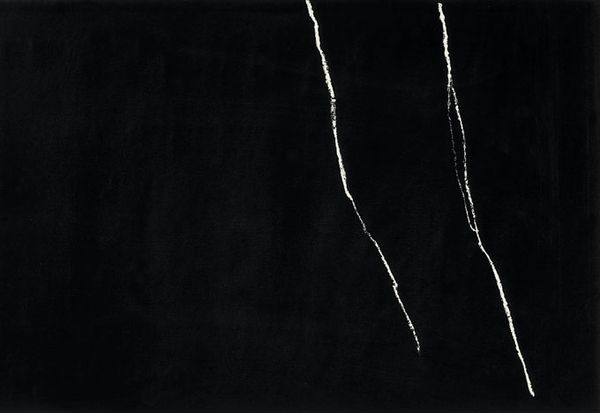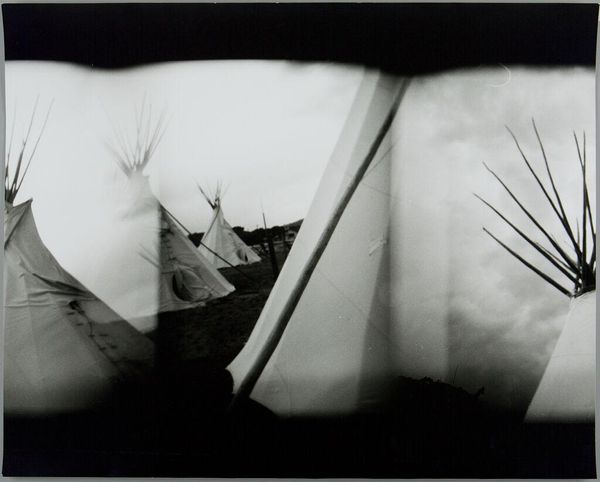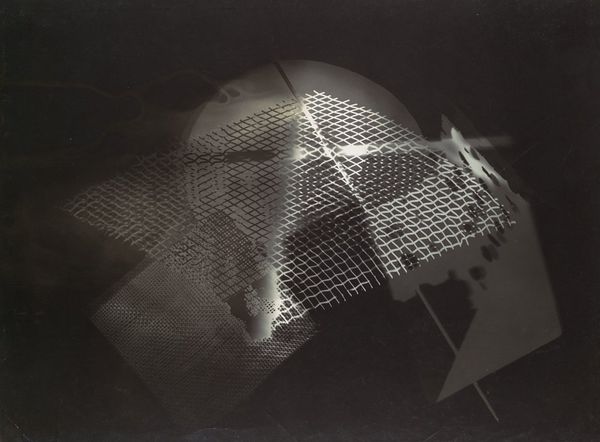
performance, photography
#
portrait
#
performance
#
conceptual-art
#
photography
#
monochrome photography
#
monochrome
Copyright: Yoko Ono,Fair Use
Editor: Here we have Yoko d'Holbachie's "Bag Piece" from 1964, documented in photography as a performance. It's… haunting, I think. The stark monochrome and obscured figure create such a powerful sense of mystery. What do you see in it? Curator: The high contrast of light and shadow is immediately striking. Consider how the photographer has manipulated tonality. The subject, a draped figure, becomes secondary to the interplay of form and texture. Note the lines created by the drape; they converge to form a sort of abstract portrait. Editor: So, you're seeing it as a formal study, focusing on shape and texture? It seems so much more loaded than just the visual elements, though. Curator: The ‘load’ you perceive comes, I argue, from the stark arrangement of those very elements. The way light sculpts the form under the cloth. Think about the geometry and negative space in the piece. Doesn’t the limited palette emphasize shape above all else? Editor: I guess so. It’s just hard to separate the… feeling… of the piece from those formal qualities you’re talking about. The performance aspect suggests a figure being concealed. Curator: Perhaps. But isn’t concealment, thematically speaking, a formal strategy here? An effective one made more intriguing with the simple black-and-white film? Ask yourself this: can form and content truly be separated? I think d’Holbachie would challenge that thought. Editor: I'm not so sure, but you've given me a lot to think about. I came into this piece seeing a shrouded figure. Now I'm seeing it as a study of light and shadow. Curator: Precisely! That constant dialogue – that movement of the mind -- between form and feeling is, for me, one marker of compelling art.
Comments
No comments
Be the first to comment and join the conversation on the ultimate creative platform.
